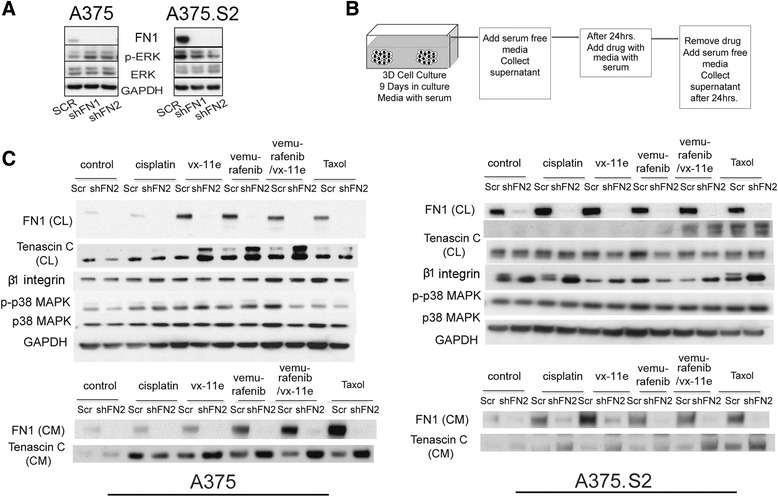Fig. 4.

A375 tumor cells that survive pharmacological inhibition of MAPK signaling pathway upregulate FN. a Immunoblots show the reduction of FN levels using shRNA has a modest effect on ERK activity for two shRNA FN constructs (shFN1 and shFN2). b Schematic of drug treatment regimen: tumors were grown in 3D from single cells embedded in laminin-rich ECM (lrECM) for 9 days, replenished with serum-free media for 24 h, followed by drug treatment in serum-containing media, and replenished for 24 h with serum-free media for harvesting. c Immunoblots show differential response of isogenic clones to drug treatment. The A375 clone shows an increase in FN production, whereas the A375.S2 clone shows little in response to drug treatment. Immunoblots of conditioned media (CM) and cell lysates (CL) pre- and post-drug treatment show an increase in FN levels in response to vx-11e, vemurafenib and combined treatment with vemurafenib and vx-11e, but not to cisplatin. TNC was upregulated in the shFN2 aggregates in response to treatment. Equal amounts of protein from conditioned media were analyzed on separate gels for measuring FN and TNC levels
